Value Midrange Common Components
While AMD and Intel architectures differ in sockets and sometimes memory configurations, there is more that is the same in the two systems than there is that is different. For that reason the Intel and AMD Value Midrange Systems share a number of common components.
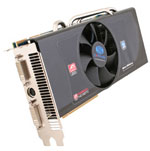 |
For video card best value we have paired the Sapphire Radeon HD 4870 1GB with both the Intel and AMD systems. As pointed out in the recent Holiday 2008 GPU Guide, the 4870 1GB is the minimum card we use internally for gaming comparisons. The Sapphire was our guide choice, but $230 seems the going rate for the 4870 1GB these days. It is available from MSI, Diamond, ASUS, HIS, Power Color, and others so you can shop for the best buy.
On the Intel system, the Gigabyte GA-EP45-UD3P motherboard provides a second PCI x16 slot. Video performance can be improved even further by adding a second Radeon HD 4870 1GB in CrossFire mode. You can also start with two 4870 512MB video cards that are now available for as little as $180 each from Power Color. This will provide 4870 CrossFire for a video card cost for both cards of just $360 total. The motherboard choice for AMD is the Foxconn A79A-S, which also provides multiple x16 slots for CrossFire. The same video options apply to the AMD Value Midrange system.
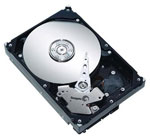 |
Hard drive capacity continues to grow, as you can see in our selection of the Seagate Barracuda 1TB drive (1000GB). While the Seagate 1.5TB drive was plagued with problems at its release, the performance and reliability of the 1TB Seagate has been excellent in our testing so far. For a price of around $100 the value is incredible. While there are differences between hard drives, outside of running benchmarks most people aren't likely to notice the difference in performance between Western Digital, Seagate, Samsung, Hitachi, and other major brands. All are worthy of consideration if the price per gigabyte (or terabyte) is right.
 |
We feel the optical drive for a best value midrange system needs to play Blu-Ray disks. The flexible LG GGC-H20LK has the ability to read both Blu-Ray and HD format disks. It also can burn DVDs at 16x speed in single or dual-layer formats. It cannot, however, burn 25GB/50GB Blu-Ray disks; adding that capability raises the cost to around $200 to $250. BD burners like the $200 LITE-ON 4X BD-R 12X DVD+R 4X Blu-ray DVD-ROM or the $230 LG 6X Blu-Ray Burner GGW-H20LK are good choices.
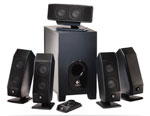 |
Cases are often very personal choices when it comes to features, but the Cooler Master RC-690-KKN1-GP is one of our favorites and it is also very well regarded by our readers. It comes standard with three 120mm fans for excellent cooling and low noise, and the power supply mounts in the bottom of the case. Audio, USB, Firewire, and eSATA ports are on top of the case, which we find an ideal location. The front bays are also ventilated metal mesh for cooling and appearance. If you prefer a more traditional case configuration, the Cooler Master Mystique, also selling for $80, mounts the PSU on top, provides font panel jacks, and is loaded with expansion ports and two 120mm fans.
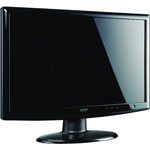 |
The last major component to discuss is the display, and here the tilt was toward best value at full 1080p HD (1920x1080) resolution. The new class of 16:9 21.5" LCD monitors provide true 1080p resolution at the break-through price of just $199. That stellar value shows just how far LCD technology has progressed. If your budget allows, or you just prefer a slightly bigger screen at the same resolution, you can move up to a 24" 16:9 1080p LCD that is selling today for around $300. Alternately, you can downgrade the resolution to 1680x1050 for slightly larger pixels (i.e. more readable text) if you purchase a 22" LCD and save a bit of money.
While the Creative Sound Blaster X-Fi Xtreme Audio is not the best sound card on the market, it is definitely tops in game compatibility. This Creative X-Fi card does a good job with audio, won't break the bank at $50, and it is a great choice for either set of powered speakers. Some would argue that onboard sound is all you need for a $1500 system, and if you are inclined to agree or have a really tight budget, you can save $50 on either the Intel or AMD Value Midrange builds just by using onboard sound.
 |
The Logitech X-540 has been a perennial favorite of users as a reasonably priced but good performing, powered 5.1 computer speaker system. It will certainly not challenge the performance of a separate Dolby amplifier powering audiophile speakers, but it will provide surprisingly good sound for the price.
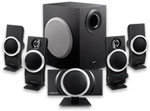 |
The Creative Inspire T6100 76 Watts 5.1 Speaker System is a similar powered speaker system that is selling at Amazon for just $57. The Creative speaker system is our choice in the AMD Value Midrange system, but either speaker system is a good choice for these Value Midrange builds.
Our choice for the top of the midrange is the well-regarded Logitech G51 system. This is mentioned only because the G51 is now just $90 after a $40 rebate, so if you want a better speaker system your net cost for choosing the G51 instead is just $10 more than the Logitech X-540 or $33 more than the Creative Inspire T6100.
 |
These are clearly desktop systems, so the keyboard and optical mouse are the basic Microsoft OEM kit. If you have more specific needs or a favorite gaming mouse you likely know exactly what you prefer. The Microsoft pair is very capable for most. For greatest compatibility, we have chosen Microsoft Vista Home Premium OEM as the Operating System. Unless you have specific networking and special enterprise security needs there is no real reason to pay the extra for Vista Ultimate. We personally recommend the 64-bit version now, but a select few applications still need a 32-bit OS (i.e. Dragon NaturallySpeaking and GameTap to name just two).










77 Comments
View All Comments
Jorgisven - Monday, January 12, 2009 - link
I think one of the big qualms about calling this "mid-range" is that in general, the mid-range has been defined by the absence of the exponential cost/power ratio taking place. Right now, there is a substantial cost for only a fractional performance increase in these systems over something that costs half as much. Even with as much as the claimed "30 percent" performance increase, you're spending twice as much or more. You can build an amazing system, referencing the entry-level article, and the E7300 comes within 72% of the 965! Not the 920... however, the price of that system is 42% of even the 920. Granted, it's not just the processor that's different...With just an extra $50-100 on that entry-level upgrading to the E8600, you get within "88%"! So, in the end, we'll call it a 10% performance increase for a 200% price increase. (because that article references the 965, not this lower 920. I guessed on the 2% difference between the two).And a GTX280? Since when is that mid-range performance? It's pretty overkill for the 1920x1080 res of the monitor in my opinion (but it's just that). I'm of the opinion that you should not spend more on your graphics card than your display for a few reasons:
Displays are harder to upgrade, due to higher cost of shipping when trying to sell. Also, they technically aren't supposed to be thrown away (heavy metals) so they are more expensive to take care of if/when they break out of warranty. I would typically spend more on the monitor, and if needed, upgrade the card later, rather than the other way around.
strikeback03 - Monday, January 12, 2009 - link
Using the numbers published in Anand's release review of the Phenom II, here is the advantage the i7 920 holds over the E8600 and the E6750. The E7300 was not tested, and the E6750 generally performed better than the tested E7200, which is why I picked it to roughly represent E7300 numbers. All these are such that 100 means twice as fast or half the time to complete.920 over E8600: 50.6, 38.7, 72.4, 136.3, 44.8, 84.3, -6.8, 103.3, 148.6, 111.5, 43.2, 87.6, 64.2, 114.6, 59.3, -5.7, -3.4, 42, -2.7
920 over E6750: 97.1, 82.2, 118, 214.1, 89.7, 135.4, 24, 174.2, 216.7, 184.5, 100.4, 151.6, 122.2, 180.9, 94.2, 11.9, 19, 74.8, 2.9
Other than some current games and single-core Cinebench, the 920 is generally at least double the E6750 and 60% faster than the E8600. Replacing the processor, motherboard, memory, and power supply from the E7300 system guide with those from the 920 system guide gives a system price of $1268, so 52.2% higher for what is often more than 100% more performance in tested benchmarks. Obviously for lots of games or other single-threaded programs and internet, etc, the cheaper system is fine, but the 920 offers lots more performance for not a ton more money and on these programs does better than diminishing returns. Getting the price of an E8600 from Newegg today, switching that for the E7300 costs 983, making the $1268 920 system 30% more expensive for upwards of 60% better performance in CPU-intensive applications.
Wesley Fink - Monday, January 12, 2009 - link
As I stated on the first page it is my belief that a mid-range system, as defined in this article, should be “computing solutions with some staying power in the market”. I certainly don’t expect that of Entry or Bargain systems. That is the reason I stretched to select Mid-Range systems with Phenom II and an entry i7 Socket 1333 system at the top.As I said in the Guide, I had first put together a balanced Phenom 9950 system at the $1400 complete system price point. When Phenom II was introduced with an entry $235 920 part (just $55 more than the price of the 9950 on that day) and a top 790FX motherboard dropped its price to $105 it made more sense to pick Phenom II instead at that same $1400.
The Guide was ready to go last week with very different system selection. We did not have a Phenom II or an i7 in our recommendations then. However we knew Phenom II was coming Thursday, and we also knew it would shake up our System selections. That is why we reworked all the systems over the weekend and delayed posting until today.
Jorgisven - Monday, January 12, 2009 - link
Granted, by the time it gets around to upgrading a system using the Wolfdale or Yorkfield architecture, they will be hard pressed to find something better to upgrade to, as it seems that technology is getting dropped. I just feel this article is about 5-6 months early. I think the prices for these parts will be "mid-range" in about that time or so. So I guess this is a good planning article if you're not doing it this month or next...A well thought-out article, but I just disagree with the timing, a bit.
tester3000 - Monday, January 12, 2009 - link
That system is clearly not mid-range. Mid-range is around $800. That's a freaking high end and the $2000 is ultra-high end. Not many people can afford over $1000. $800 is the sweet spot for most people. Without monitor of course. Add another $200 for monitor.boboko - Tuesday, January 13, 2009 - link
>"That system is clearly not mid-range. Mid-range is around $800. That's a freaking high end and the $2000 is ultra-high end. Not many people can afford over $1000. $800 is the sweet spot for most people."Maybe. But the type of people who read Anand Tech and build a system from components will almost always keep about half the stuff from their old system. I'm getting ready to build a new PC, and all I'll buy is the CPU, MB, and memory. I'm still debating whether to buy a new video card, or wait a month or two for the prices to go down. But I'll keep my drives, my monitor, my case, my OS, my power supply, and my sound card and speakers, so even using these components that you claim are out of anyone's price range, I'll only be spending around $500, and I might make some of that back selling my old MB and CPU as a barebones that I stick into one of the several cases and PS's I got for free after rebate when Fry's was selling them evey month.
strikeback03 - Monday, January 12, 2009 - link
well, "most people" buy prebuilt from Dell or their local Best Buy, etc. For those building their own system, $1500 would generally qualify as midrange.The budget guide had a few builds under $1000 including monitor.
Jorgisven - Monday, January 12, 2009 - link
I'd agree. "Most people" will not be reading articles like this. "Most people who are looking at building their own" have a good idea of their budget, and it's generally higher than "most other people", because performance and control is more important generally speaking.elerick - Monday, January 12, 2009 - link
I have to agree with the author on this. He talked about the idea of reworking midrange, but ultimately stated his case for not changing.You can't please everyone, I build a new rig every 2 yeaars and I always do exactly what this author has put into an article. He choose the latest arcitectures and then picked the most affordable version / upgradeable. That is why the Core i7 920 ($300) and Phenom II ($235 & $275) were picked. I couldn't agree more with those picks for the month of January. Next month those picks could change, based on Intels counter pricing to Phenom II launch.
7Enigma - Monday, January 12, 2009 - link
From article:"Phenom II performance is more in line with Intel's latest Core i7, and for that reason we really wanted to select the Phenom II 920 for the AMD Value Midrange."
OK, the new Pheom II processors are definitely a good step in the right direction but this is a bit misleading to say IMO.